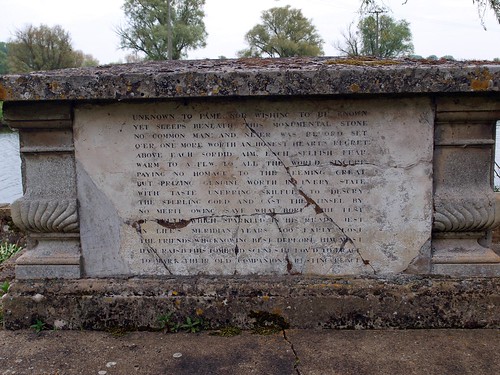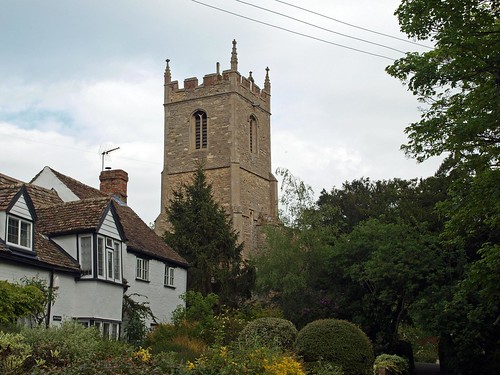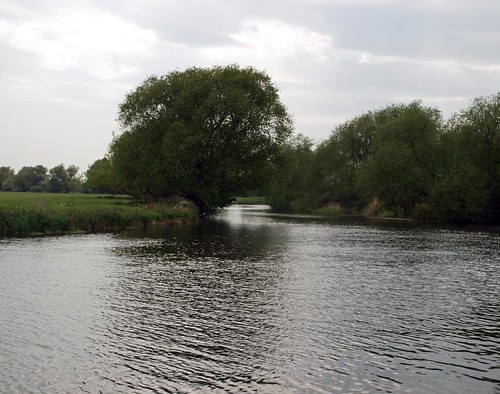ALL SAINTS. It is odd that the S porch windows should be late C13, with bar tracery. Do they come from a porch preceding the present one? The W tower is ashlar-faced and Perp, with set-back buttresses, a W doorway with traceried spandrels, bell-openings in pairs of two lights each, a quatrefoil frieze over, and no spire. Embattled S and N aisle and clerestory, all Perp. But the S doorway seems to be of c.1300 (continuous mouldings) and the chancel of about the same date, though over-restored. Windows with Y-tracery and two low-side windows, that on the S a prolongation below a transom of one light of a two-light window. Early C14 N and S arcades of four bays, tall piers, standard elements. The nave roof has figures on the wall-posts and angels against the intermediate principals, the N and S aisle roofs only the former. - FONT. A big, ambitious Perp piece. Panelled stem, bowl with alternating patterns. - PLATE. Cup and Cover Paten of 1674-5; Paten on foot of 1837-8. - MONUMENTS. In the S aisle two large, uncouth standing monuments, both no more than an inscription tablet in big letters with strapwork around or on top. Mawde Bedell d. 1587, dated 1597, and Sir John Bedell d. 1613.
HARTFORD. Very charming is its white manor house, older than Queen Elizabeth, and rather quaint is the inn, with stones said to have come from an ancient church at Huntingdon. It faces a quiet lane bringing us from the twisting High Street to the church, which still has stones carved and set up by the Normans. They built the chancel and part of the north and south arcades. The font is 13th century, the tower about as old as Caxton’s books. There is a 17th century oak chest with flowered panels. The most pathetic thing we saw here was a tribute to Reginald Coleridge, a young man on board the Titanic when she went down in 1912, one of the most dramatic catastrophes of the generation before the Great War.
There are two points of interest outside the church. One is the vicarage, reminding us that the gift of the living, with the tithes, was part of the marriage settlement of Oliver Cromwell’s wife; the other is the gravestone where the poet Cowper is said to have loved to sit looking across the river. In the days when he lived at Huntingdon he would often come to this churchyard.
There are two points of interest outside the church. One is the vicarage, reminding us that the gift of the living, with the tithes, was part of the marriage settlement of Oliver Cromwell’s wife; the other is the gravestone where the poet Cowper is said to have loved to sit looking across the river. In the days when he lived at Huntingdon he would often come to this churchyard.



No comments:
Post a Comment